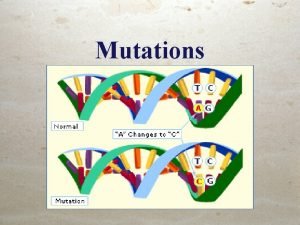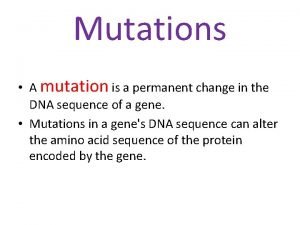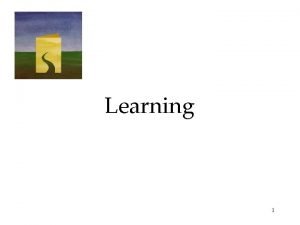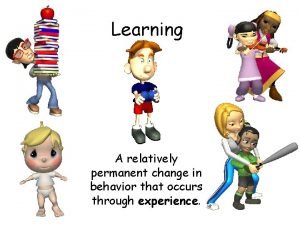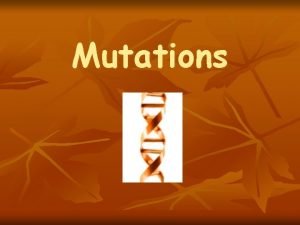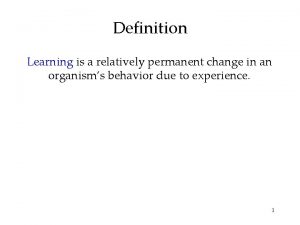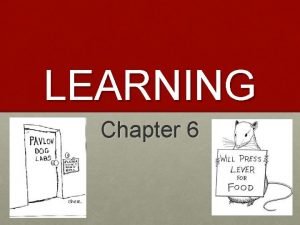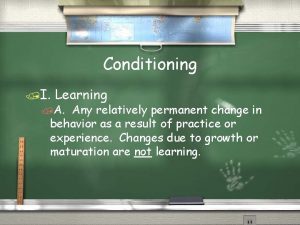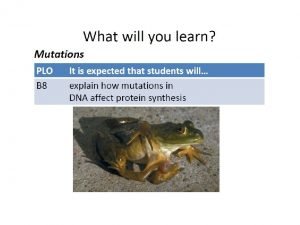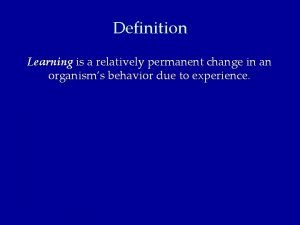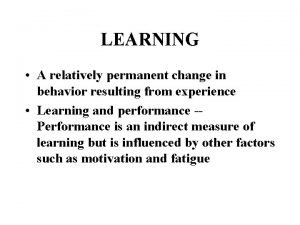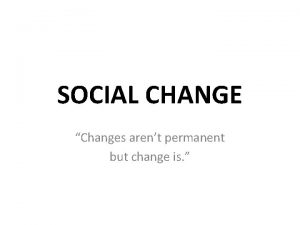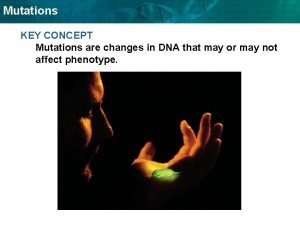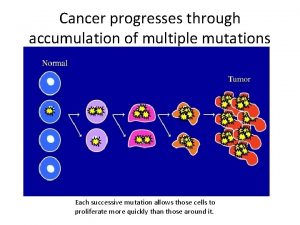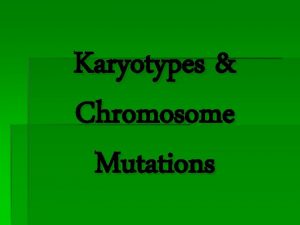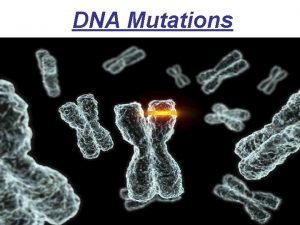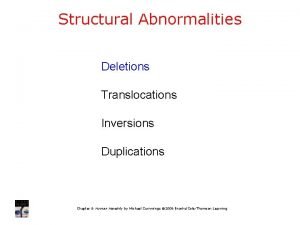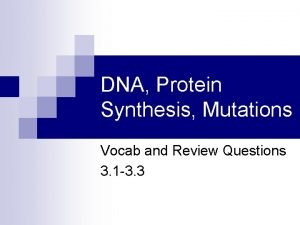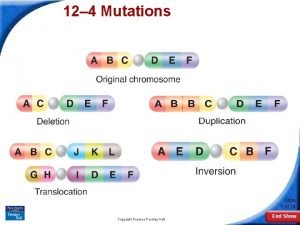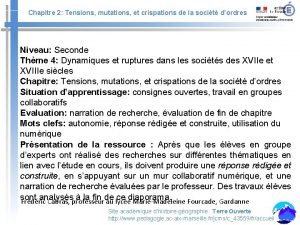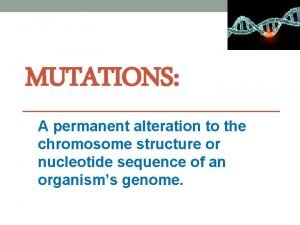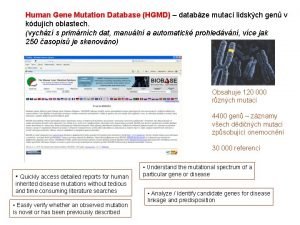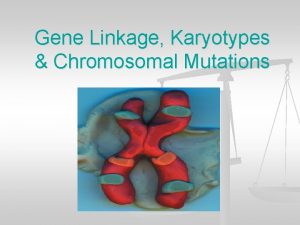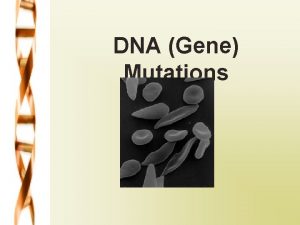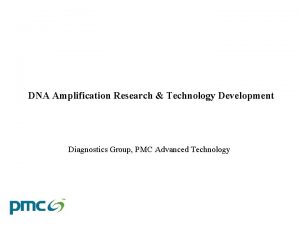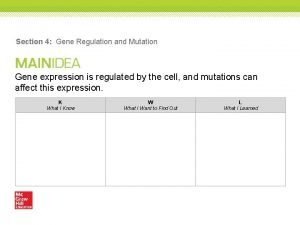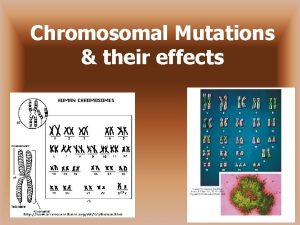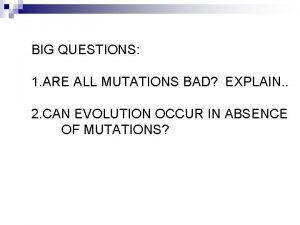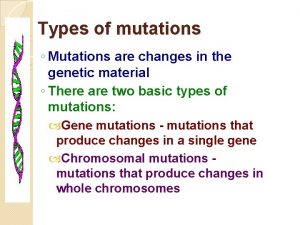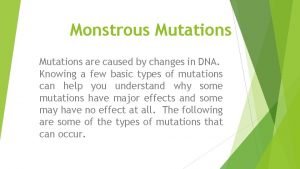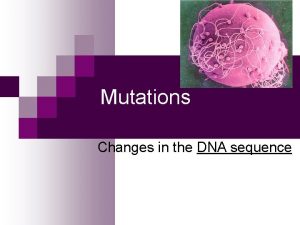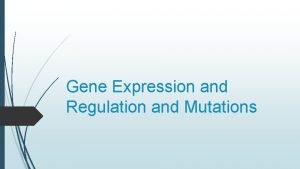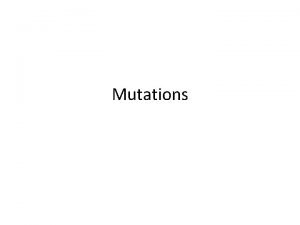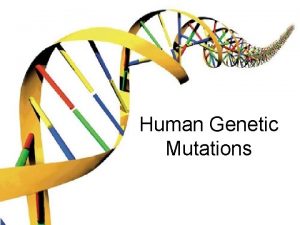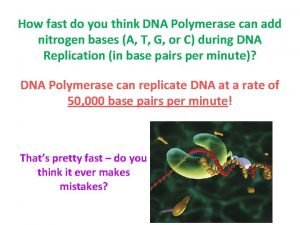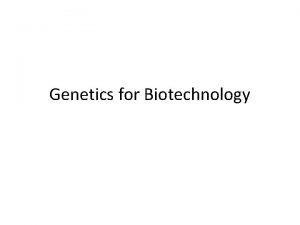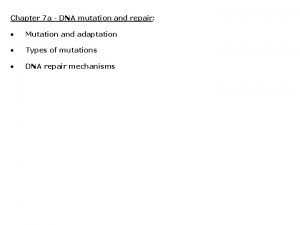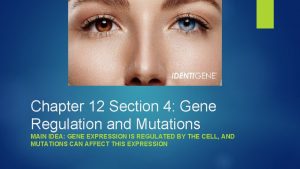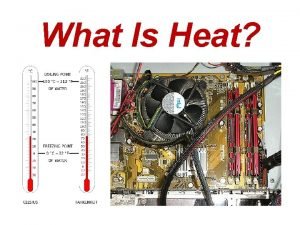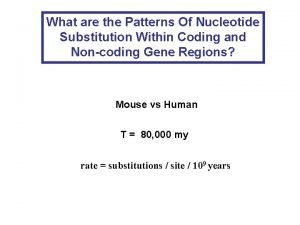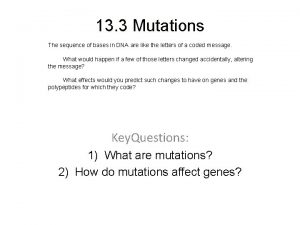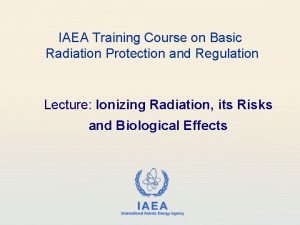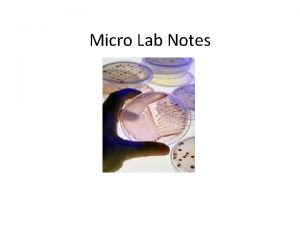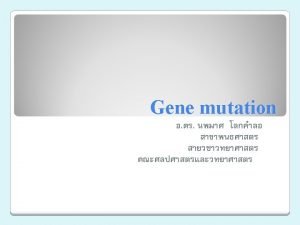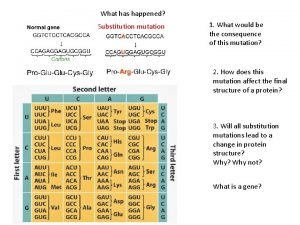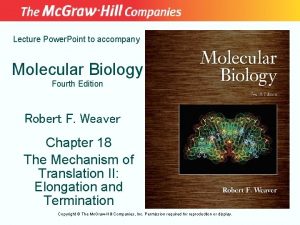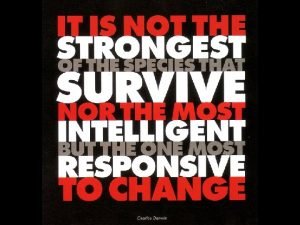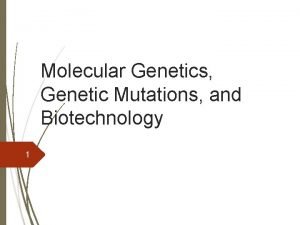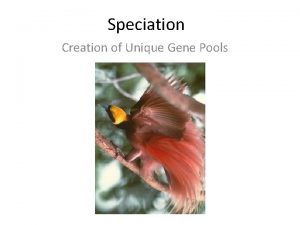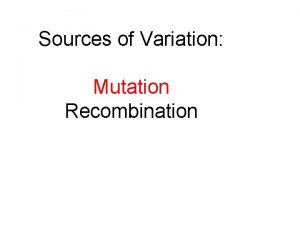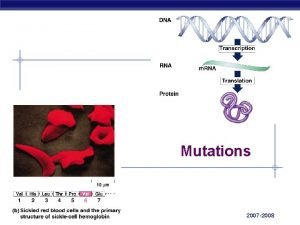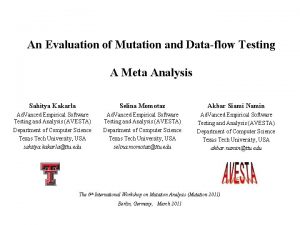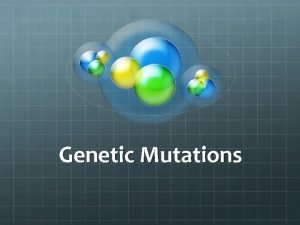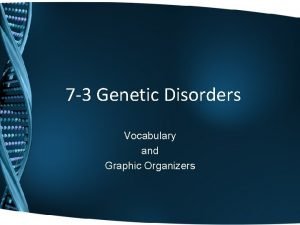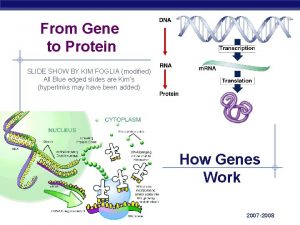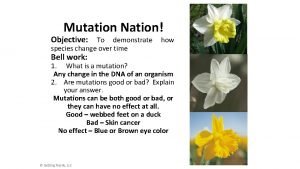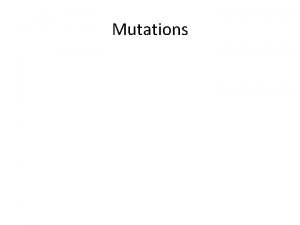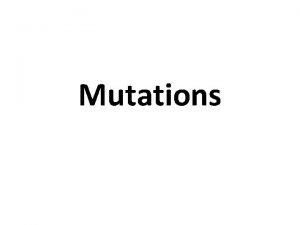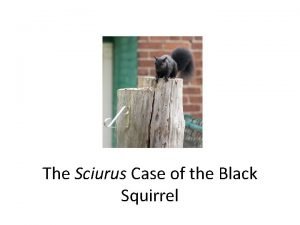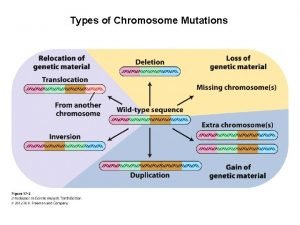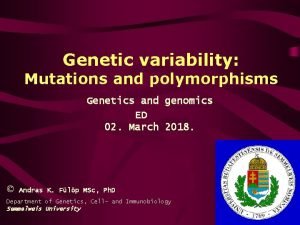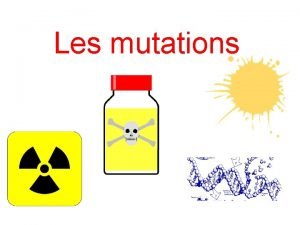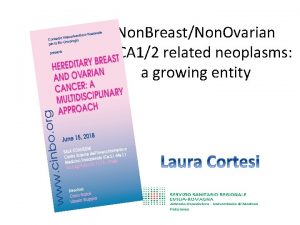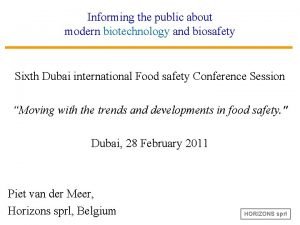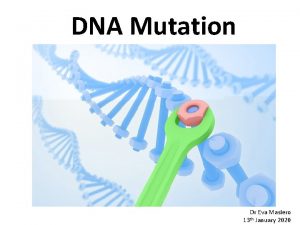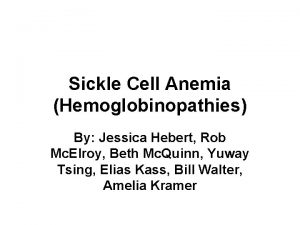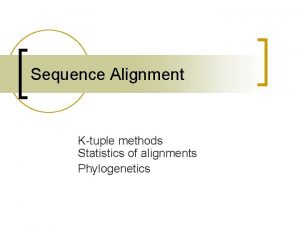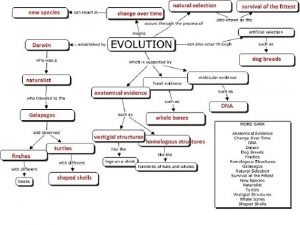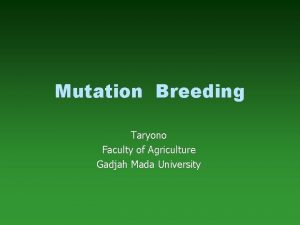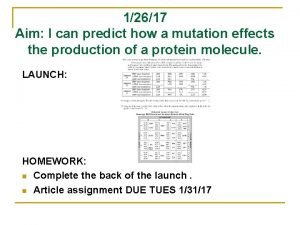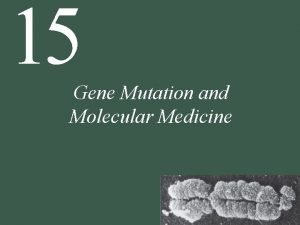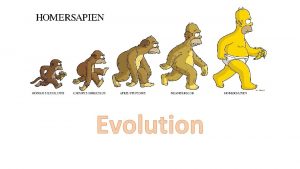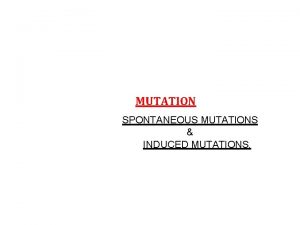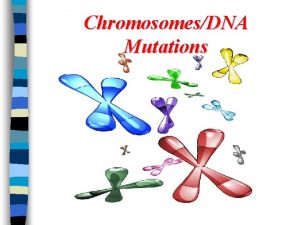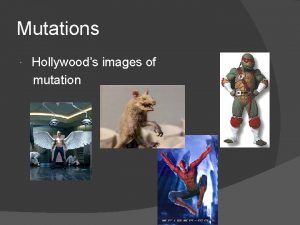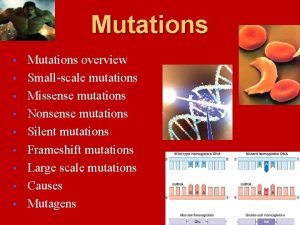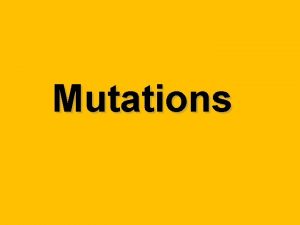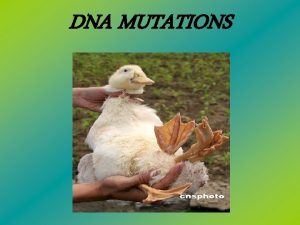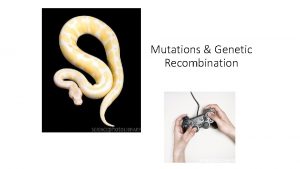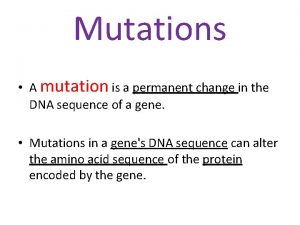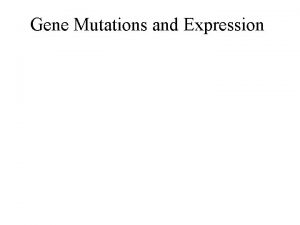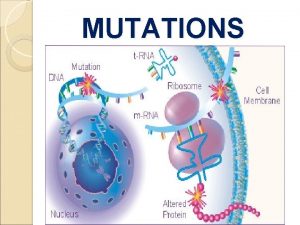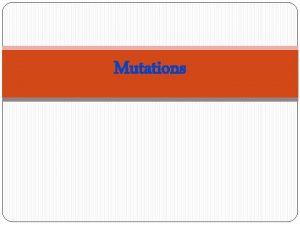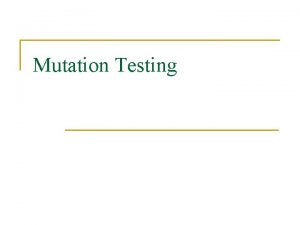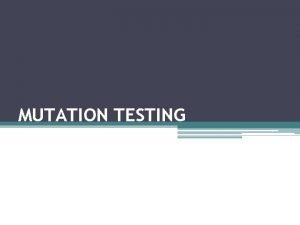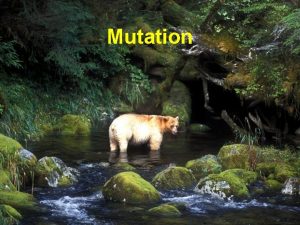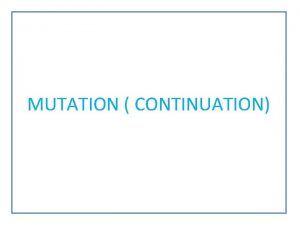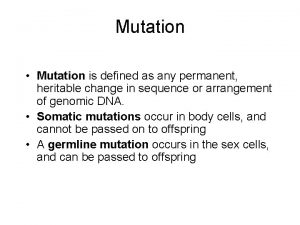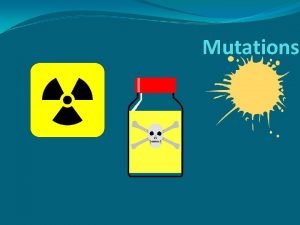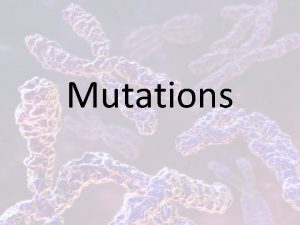Mutations A mutation is a permanent change in





















































































- Slides: 85

Mutations • A mutation is a permanent change in the DNA sequence of a gene. • Mutations in a gene's DNA sequence can alter the amino acid sequence of the protein encoded by the gene.

GOOD BAD NEUTRAL

What base was mutated in DNA? The substitution was a T but it is suppose to be _____.

Gene Mutations on DNA

Examples of Gene Mutations THE FAT CAT ATE THE RAT Each word represents an amino acid in a PROTEIN (SENTENCE) THE HAT CAT ATE THE RAT Substitution causes Point mutation Normal protein or sentence Sentence or Protein is still readable. THE ATC ATA TET HER AT Sentence makes No sense due to Frame Shift Deletion causes Frame shift THE FFA TCA TAT ETH ERA T Sentence makes NO sense due to Frame Shift Duplication or Insertion causes Frame shift

Chromosome Mutations (point, deletion, translocation, )



Definitions • Somatic cell mutation- mutation in body cell *Not passed to offspring ex. Lung cancer Q. If a mother has lung cancer or skin cancer and gets pregnant will her child be born with lung or skin cancer? • Germline mutation – mutation in the sex cells, the egg and sperm or gametes. ex. BRCA 1 and BRCA 2 (breast cancer and ovarian cance genes) *Can be passed to offspring generation after generation, less common.

EOC Question • Which would most likely produce a mutation that is passed on to offspring? a. Radiation changing the DNA sequence in skin cells b. A gamete with an extra chromosome forming c. Tobacco smoke altering the genes in lung cells d. Exposure to chemicals altering nerve cell function


Effects of germ line mutations 1. No change occurs in phenotype. No noticeable effect of the phenotype. 2. Small change occurs in phenotype. ex. Can cause cat's ears to curl backwards slightly. 3. Big change occurs in phenotype. Really important phenotypic changes. ex. DDT resistance in insects or are lethal (causing death)

Evolution and Mutation • Mutations are the raw materials of evolution. • Evolution absolutely depends on mutations because this is the only way that new alleles and new regulatory regions are’ created.


Pepper Moths

EOC Question • Which will most likely cause variations to occur within a species? a. Competition b. Mutation c. Mutualism d. Predation



Random or Spontaneous Mutations

Spontaneous Mutation of MSTN Gene • MSTN is the myostatin gene • The MSTN gene provides instructions for making a protein called myostatin which is active in muscles used for movement. • This protein normally restrains muscle growth, ensuring that muscles do not grow too large. • Mutations lead to an overgrowth of muscle tissue.

Spontaneous Mutation

Myostatin protein is not working to maintain normal muscle size. Question: 1. The reason the myostatin protein is not working correctly is due to a __________. 2. What does the MSTN gene instruct the ribosome to make? ______________

Other Conditions due to Mutations Tree Man Condition caused by a Mutation in the EVER 1 Or EVER 2 gene on Chromosome 17. Wolf Man Syndrome is caused by a mutation on chromosome 17 which causes abnormal hair growth all over the body.

Strange Sighting in Asheboro, N. C. It is believed that this is the same animal several folks spotted in their backyards. The picture on the left was taken in the day time when the animal would be seen. The picture on the right was taken by a hunting camera mounted on a tree at night. Q. What is this animal? Is a combination of animals? 2013

Desirable Mutations in Animals Scottish Fold

The name of the mystery animal – SAMPSON FOX A Sampson fox is an abnormal Red Fox who has a MUTATION that prevents the animals guard hairs from growing. Normal Red Fox with guard hairs. Sampson fox are very rare and usually die due to environmental conditions.

Desirable Mutation for future

U Causes of Induced Mutations Radiation Chemicals Smoking Ultra-violet Rays

SKIN CANCER • Skin cancer occurs when errors (mutations) occur in the DNA of skin cells. • The mutations cause the cells to grow out of control forming cancer cells.

Melanoma (BRAF mutation)

Mutations caused possibly by parasites


Mutations Caused by Radiation Fallout

Mutations Caused by Chemicals Mercury in the environment

Lesson for Drug Safety-Thalidomide


Other Mutations in Animals

EOC Question • A large population of cockroaches was sprayed with an insectide. A few of the cockroaches survived and produced a population of cockroasches that was resistant to this spray. What can best be inferred from this example? a. A species will adapt no matter what the environment B. The environment has no effect on the survival of an organism c. Insecticides cause mutations that are passed on to the next generation. d. Individuals with favorable variations survive and reproduce

EOC (tricky one!) • The use of pesticides on crops has been a common farming practice for decades. What has been the greatest effect of natural selection through the use of pesticides on certain insect population? a. Natural selection has been altered because the insects and their predators are killed. b. The rate of selection is increased because the pesticides do not kill the insects that are naturally resistant to it. c. The rate of selection has decreased because the pesticides kill only young insects. d. The pesticides have altered natural selection by causing the insect DNA to spontaneously mutate.


Hemophilia • Hemophilia is caused by mutation in the X sex chromosome. • Hemophilia can be inherited, or it may be caused by a spontaneous mutation of the factor gene. • Approximately 30% of cases of hemophilia are caused by a spontaneous mutation of the gene. In these cases, the mother is not a carrier of hemophilia and the child affected is the first in the family to have hemophilia and to carry the defective factor gene.

Hemophilia

Do you recognize any genes that can cause a disorder on this sex chromosome?


Sickle Cell Anemia Is this mutation a point or frame shift mutation?

Sickle cell disease, hereditary blood disorders, occurs almost exclusively among black Americans and black Africans. .

Sickle Cell causes a great deal of pain fatigue and an enlarged spleen

Cystic Fibrosis Caused by mutation in Protein in plasma Membrane.

CF Mutation causes over production of mucus which clogs lungs and intestines (breeding ground for bacteria)

Cystic fibrosis (CF) is the most common inherited fatal disease of children and young adults in the United States. CF occurs in about 1 out of 3, 200 whites, 1 out of 15, 000 African-Americans, and 1 out of 31, 000 Asian. Americans.

Alzheimer's disease • Is not a normal consequence of growing older, and scientists are continuing to seek its cause. • Mutations in four genes, situated on chromosomes 1, 14, 19, and 21, are thought to be involved in the disease, and the best described are PS 1 (or AD 3) on chromosome 14 and PS 2 (or AD 4) on chromosome 1.


Notice the plaques On neurons in Alzheimer’s brain.

Kidney Mutations

HUNTINGTON'S DISEASE • Huntington's disease (HD) is an inherited, progressive brain disorder. • It causes the degeneration of cells in the basal ganglia, a pair of nerve clusters deep in the brain that affect both the body and the mind. • HD is caused by a single dominant gene that affects men and women of all races and ethnic groups

Huntington’s is a lethal mutation. Huntington’s causes a wasting Away of both mind and body.

HUNTINGTON’S Mutation gene • The gene mutation that produces HD was mapped to chromosome 4 in 1983. • The mutation involves a triplet of nucleotides, cytosine (C), adenine (A), and guanine (G), known as CAG. • The mutation is an expansion of a nucleotide triplet repeat in the DNA that codes for the protein huntingtin. • In unaffected people the gene has thirty or fewer of these triplets, but HD patients have forty or more. These increased multiples either destroy the gene's ability to make the necessary protein or cause it to produce a misshapen and malfunctioning protein. • Either way, the defect results in the death of brain cells.

Huntington’s

HD does not usually strike until mid-adulthood, between the ages thirty and fifty, • HD affects 3 to 7 per 100, 000 people of European ancestry. HD appears to be less common in other populations, including people of Japanese, Chinese, and African descent.

PHENYLKETONURIA (PKU) • (PKU) is caused by a gene-environment interaction. • The affected individual is unable to convert phenylalanine into tyrosine. • Phenylalanine accumulates in the blood and can reach toxic levels. • Toxicity levels may impair brain and nerve development and result in mental retardation, organ damage, and unusual posture.

Testing for PKU

PKU • Recognition of dietary phenylalanine as a critical environmental trigger has enabled children born with PKU to lead normal lives when they are placed on low-phenylalanine diets. • Mothers with the disease can bear healthy children.

Retinoblastoma (cancer of the eye) • Mutated gene increases susceptibility for retinoblastoma (cancer of the eye that affects approximately 300 children in the United States each year).

Retinoblastoma

Tay-Sachs • Tay-Sachs allele (gene variant) among Ashkenazi Jews is due to a four base-pair insertion causing a frame shift mutation Lethal Mutation

Polydactyly among the Amish

Polydactyly in animals

Breast Cancer Gene

• Actress Angelina Jolie has revealed that she had a double mastectomy after she learned that she carries a mutated version of the gene BRCA 1. • She had a very high risk of breast cancer. • She explained her decision in a New York Times article. Here are some questions her story may raise for other women.

Q: What is the BRCA 1 gene? A: BRCA 1 (pronounced brak-uh) stands for “breast cancer one. ” First mutated gene that scientists discovered among families whose histories revealed many cases of breast cancer. Ovarian cancers also are common in such families. A second such gene is known as BRCA 2.

• Q: How high is the cancer risk in women who carry the mutations? • A: Women with the BRCA 1 or BRCA 2 mutations have an average breast cancer risk of 60 percent. • Men with the mutations have higher breast cancer risks than other men do. • Jolie’s mother died of ovarian cancer at age 56, says her personal risk was estimated at 87 percent. • Q: Should all women be tested for these mutations? • A: No. Jolie says the tests can be expensive.

DOWN SYNDROME Karyotype showing a TRISOMY on chromosomal pair 21. This mutation is due to a non-disjunction of chromosomes.

Other Mutations Mermaid Syndrome Congenital mutation Apert Syndrome Caused by a mutation of the FGFR 2 gene which makes a Protein called fibroblast growth Factor receptor 2


Albino Organisms -Albinism is caused by mutations is 6 known genes. -An organism with this mutation cannot produce the Melanin pigment protein which gives skin, eyes, and hair color.

Purposely Mutating Genes (New Technology) • A new, fast and inexpensive way to mutate genes and large, non-gene pieces of DNA has been developed by University of Utah geneticists. • WHY? The new method promises to speed efforts to learn more about how non-gene portions of DNA control genes to cause human defects and diseases.

They tested the method by mutating a gene involved in bone formation, resulting in short, malformed tail and limbs in the mutant mouse on the left, compared with the skeleton of a normal mouse on the right.

Plant Mutation




Summary of mutations • Sources of genetic variation in sexually reproducing organisms includes: *crossing over in meiosis *gene mutations *nondisjunction (chromosomal mutation) *fertilization *random assortment of chromosomes

Summary continued • Mutations are changes in DNA coding • Mutations can be deletions, additions, or substitutions ex. hemophilia caused by all 3 • Mutations can be RAMDOM and spontaneous ex. ear lobe phenotype • Mutations can be caused by radiation ex. melanoma (skin cancer) • Mutations can be caused by chemicals • Mutations change the amino acid sequence which in turn changes the protein and protein function ex. sickle cell anemia

Summary continued • Mutations can change the phenotype (outward appearance) of an organism. Ex. mutation in hemoglobin pigment enzyme caused the blue color of Marvin Fugate • ONLY mutations in sex cells (egg and sperm), also called gametes, can result in heritable change. (mutations in sex cells can be passed to offspring) Ex. BRCA 1 breast cancer gene is passed from mother to offspring.

Mutation needed in Evolution • One process of Natural Selection in a population for genetically variability is due to mutations and genetic recombination.
 A mutation is any mistake or change in the
A mutation is any mistake or change in the Permanent change in dna sequence
Permanent change in dna sequence Learning is relatively permanent
Learning is relatively permanent Learning is a permanent change in behavior
Learning is a permanent change in behavior Learning is a permanent change in behavior
Learning is a permanent change in behavior A relatively permanent change of behavior is called
A relatively permanent change of behavior is called What is a beneficial mutation
What is a beneficial mutation Define permanent change
Define permanent change Douglas merritte
Douglas merritte Learning is any relatively permanent change
Learning is any relatively permanent change A permanent change in dna
A permanent change in dna Define permanent change
Define permanent change Relatively permanent change
Relatively permanent change Changes aren't permanent but change is
Changes aren't permanent but change is Jtr 0506
Jtr 0506 Gene mutations
Gene mutations Cancer mutations
Cancer mutations Slidetodoc.com
Slidetodoc.com Dna vs rna worksheet answer key
Dna vs rna worksheet answer key Types of mutation
Types of mutation Robertsonian translocation carrier
Robertsonian translocation carrier Protein synthesis and mutations
Protein synthesis and mutations 12-4 mutations
12-4 mutations Tensions mutations et crispations de la société d'ordres
Tensions mutations et crispations de la société d'ordres Permanent
Permanent Gene mutations
Gene mutations Cancer mutations
Cancer mutations Chromosomal mutation images
Chromosomal mutation images What causes mutation
What causes mutation Mutations in dna
Mutations in dna Section 4 gene regulation and mutation
Section 4 gene regulation and mutation Cancer mutations
Cancer mutations Karyotype mutations
Karyotype mutations Dna types of mutations
Dna types of mutations Syndrome triple x
Syndrome triple x Monstrous mutations
Monstrous mutations Gamete mutation definition
Gamete mutation definition Dna types of mutations
Dna types of mutations Gene
Gene Chapter 14 lesson 4 mutations
Chapter 14 lesson 4 mutations Chromosomal mutations
Chromosomal mutations Point or frameshift mutation
Point or frameshift mutation 4 steps of protein synthesis
4 steps of protein synthesis What are some neutral mutations
What are some neutral mutations Central dogma
Central dogma Mutagens
Mutagens Mutation reverse
Mutation reverse Protein synthesis and mutations
Protein synthesis and mutations Mutation and adaptation
Mutation and adaptation Section 4 gene regulation and mutation
Section 4 gene regulation and mutation What is this picture
What is this picture Synonymous vs nonsynonymous mutation
Synonymous vs nonsynonymous mutation Good mutation example
Good mutation example Dna mutation
Dna mutation What type of mutation occurred?
What type of mutation occurred? Dna mutation
Dna mutation Substitution mutation
Substitution mutation Frameshift mutation
Frameshift mutation Natural selection graphic organizer
Natural selection graphic organizer Inversion mutation
Inversion mutation Hox gene mutation in drosophila
Hox gene mutation in drosophila Missense mutation
Missense mutation Type of dna mutation
Type of dna mutation Data flow and mutation testing
Data flow and mutation testing Human
Human Mutation graphic organizer
Mutation graphic organizer Simultaneous transcription
Simultaneous transcription Evolution mutation nation answers
Evolution mutation nation answers Chromosomal mutation
Chromosomal mutation Neutral mutation
Neutral mutation Which mutation
Which mutation Chromosomal mutation deletion
Chromosomal mutation deletion Mutation and polymorphism
Mutation and polymorphism Mutation isosemantique
Mutation isosemantique Chromosome mutation types
Chromosome mutation types Brca gene mutation
Brca gene mutation Molecular evolution
Molecular evolution Teosinthe
Teosinthe Transversion vs transition mutation
Transversion vs transition mutation Anemia
Anemia Synonymous vs nonsynonymous mutation
Synonymous vs nonsynonymous mutation Mutation
Mutation Advantage of mutation
Advantage of mutation What always happens when an organism mutates brainpop
What always happens when an organism mutates brainpop Transversion mutation
Transversion mutation Mutation
Mutation
